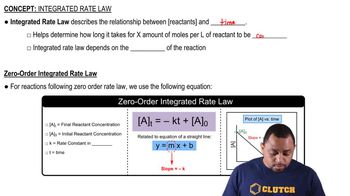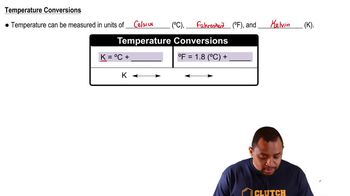Textbook Question
Make the following conversions: c. 233 °C to K
 Verified step by step guidance
Verified step by step guidance



Make the following conversions: c. 233 °C to K
Make the following conversions: d. 315 K to °F
Make the following conversions: e. 2500 °F to K
The temperature on a warm summer day is 87 °F. What is the temperature in °C?
Many scientific data are reported at 25 °C. What is this temperature in kelvins and in degrees Fahrenheit?
(a) A sample of tetrachloroethylene, a liquid used in dry cleaning that is being phased out because of its potential to cause cancer, has a mass of 40.55 g and a volume of 25.0 mL at 25 °C. What is its density at this temperature? Will tetrachloroethylene float on water? (Materials that are less dense than water will float.)